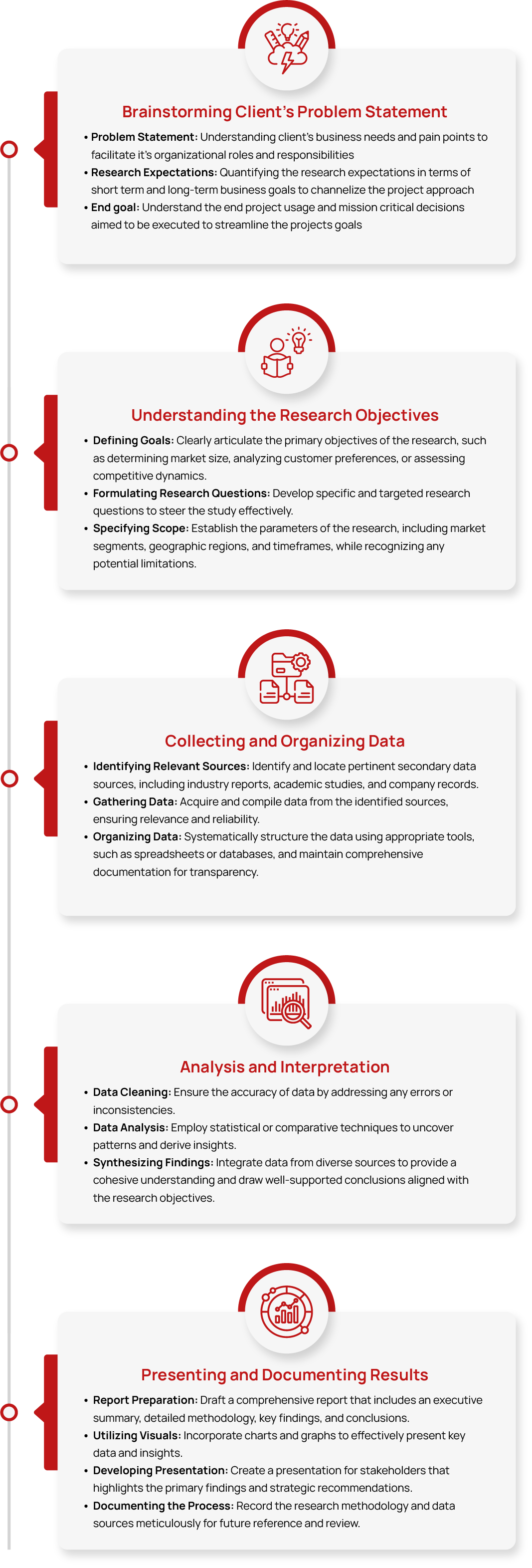Global Occupant Classification System (OCS) Market Size, Share, Growth and Trend Analysis Report, 2032
- Summary
- Market Landscape
- Methodology
- Table of Content
Global Occupant Classification System Market Size, Share & Growth and Trend Analysis Report, By Sensor Type (Pressure Sensor, Seat Belt Tension Sensor), By Component Type (Airbag Control Unit, Sensors, and Others), By Light-Duty Vehicle Type (Economy Class, Mid-Size Class, and Luxury Class), By Electric Vehicle Type (Battery Electric Vehicle, Fuel Cell Electric Vehicle, Plug-In Hybrid Electric Vehicle, Hybrid Electric Vehicle) and By Region (Asia Pacific, Europe, North America, Latin America and Middle East & Africa) and Forecasts, 2024-2032.
An Occupant Classification System (OCS) is a vehicle safety technology that detects the presence, weight, and position of passengers to optimize airbag deployment and enhance passenger protection.
The Occupant Classification System Market was valued at approximately USD XX million in 2024 and is projected to reach around USD XX million by 2032, growing at a compound annual growth rate (CAGR) of around 6% from 2025 to 2032.
Industry Trends
The Occupant Classification System (OCS) is advancing with AI-powered sensors capable of distinguishing occupant size, posture, and position for enhanced airbag deployment precision.
A notable trend is the integration of these systems with IoT for real-time monitoring and improved vehicle safety analytics.
The occupant classification system (OCS) market is experiencing significant growth, driven by rising vehicle safety standards and the adoption of advanced technologies like AI and sensor integration. OCS technologies are becoming essential for optimizing airbag deployment and enhancing passenger safety, especially with the growing adoption of electric and autonomous vehicles.
Additionally, the push for sustainability in the automotive sector is encouraging the development of lightweight, energy-efficient systems that align with global environmental goals. The increasing integration of occupant classification systems in electric vehicles (EVs) and autonomous vehicles is further propelling the market forward.
However, the market faces challenges such as high production costs, supply chain disruptions, and technical complexities in ensuring accurate occupant detection.
Despite these obstacles, ongoing innovations and the increasing integration of OCS in next-generation vehicles are expected to sustain market growth, addressing consumer and regulatory demands for advanced safety solutions.
Industry Expert’s Opinion
- Laurent Fabre, Head of the Passive Safety and Sensorics Business Unit at Continental
“Saving lives in road traffic has been the driving force behind our innovations and motivation to work on them every day for 40 years. Today, with the increasing number of sensors and computing power in vehicles, we can further increase the level of safety for all road users. With the available data from sensors for the vehicle environment and vehicle interior, we can deploy airbags earlier and we can also adjust the filling level of the airbag. This is made possible, for example, by the development of our new airbag valve technology, which enables an adapted response to individual crash situations for the best protection.”
TT Consultants’ Perspective
The occupant classification system (OCS) market is poised for significant growth, driven by advancements in vehicle safety technology, increasing regulatory pressures, and the rising demand for sophisticated automotive safety features.
As the automotive industry shifts towards smarter, more connected vehicles, OCS technologies are becoming critical in optimizing airbag deployment, enhancing passenger protection, and supporting the integration of autonomous and electric vehicles.
Key trends such as the adoption of AI, machine learning, and sensor technologies are reshaping the market by enabling more accurate and reliable occupant detection systems.
Additionally, the increasing focus on sustainability in the automotive sector is driving innovations in lightweight, energy-efficient systems that meet environmental goals without compromising safety.
However, the industry faces challenges including high production costs, supply chain disruptions, and the complexity of developing systems that can accurately detect a wide range of occupant types and conditions.
By embracing technological advancements, strategic collaborations, and a strong focus on safety, the occupant classification system market is well-positioned to thrive and meet the growing demands for advanced automotive safety features in the coming years.
Market Segmentation
1. By Sensor Type (Pressure Sensor, Seat Belt Tension Sensor)
The seat belt tension sensor segment holds the largest share of the global occupant classification system market of approximately XX% in 2024, driven by the increasing adoption of passive safety standards in vehicles and the enforcement of government regulations, particularly in emerging economies.
The pressure sensor segment is projected to grow at a faster pace over the next five years, supported by advancements in sensor technologies and the rising demand for enhanced vehicle safety features.
Furthermore, the sensors segment is anticipated to register the highest growth during the forecast period, as sensors are essential components in ensuring accurate occupant detection and classification.
This growth is further fueled by the integration of innovative technologies like AI and IoT, enhancing the overall efficiency and reliability of occupant classification systems.
2. By Component Type (Airbag Control Unit, Sensors, and Others)
The airbag control unit (ACU) segment is expected to hold the largest share of the global occupant classification system market of approximately XX% in 2024.
It plays a critical role in ensuring precise airbag deployment during accidents.
The sensors segment is anticipated to witness the fastest growth, driven by technological advancements and the increasing integration of pressure, seat belt tension, and other sensors into vehicles to enhance occupant detection accuracy.
Meanwhile, the others segment, which includes auxiliary components like wiring harnesses and connectors, is also gaining traction as the demand for more integrated and efficient occupant classification systems rises. Collectively, these components form the backbone of modern safety mechanisms, ensuring reliable performance across diverse vehicle types.
3. By Light-Duty Vehicle Type (Economy Class, Mid-Size Class, and Luxury Class)
The mid-size class is expected to account for the largest share of the global occupant classification system market of approximately XX% in 2024, driven by the widespread adoption of occupant classification systems in this vehicle category.
The growing demand for advanced safety features has also spurred significant growth in the luxury class, where premium vehicles increasingly integrate sophisticated occupant classification technologies as part of their enhanced safety and comfort offerings.
Meanwhile, the economy class segment is gradually adopting occupant classification systems, propelled by cost-effective innovations and regulatory mandates aimed at improving passenger safety across all vehicle categories.
This broadening adoption across vehicle classes highlights the pivotal role of occupant classification systems in advancing automotive safety standards.
4. By Electric Vehicle Type (Battery Electric Vehicle (BEV), Fuel Cell Electric Vehicle (FCEV), Plug-In Hybrid Electric Vehicle (PHEV), Hybrid Electric Vehicle (HEV))
The battery electric vehicle (BEV) segment is expected to dominate the global occupant classification system market of approximately XX% in 2024, driven by the rising adoption of fully electric vehicles and the integration of advanced safety technologies.
The plug-in hybrid electric vehicle (PHEV) and hybrid electric vehicle (HEV) segments are also witnessing significant growth, as automakers increasingly equip these vehicles with occupant classification systems to meet evolving safety standards.
Additionally, the fuel cell electric vehicle (FCEV) segment, though currently smaller, is poised for steady growth with advancements in hydrogen-powered technologies and the expanding focus on sustainable transportation.
Across all electric vehicle types, the incorporation of occupant classification systems enhances safety and compliance, supporting the broader adoption of electric mobility solutions.
5. By Region (Asia Pacific, Europe, North America, Latin America and Middle East & Africa)
The Asia Pacific region is projected to hold the largest share of the global occupant classification system market of approximately XX% in 2024, driven by the growing automotive industry, increasing vehicle production, and stringent safety regulations in countries like China, Japan, and India.
Europe is expected to witness significant growth, supported by the presence of established automakers, stringent safety standards, and the rising adoption of advanced safety technologies in vehicles.
In North America, the market is fueled by strong consumer demand for high-tech safety features and regulatory mandates promoting passenger safety.
Meanwhile, Latin America and the Middle East & Africa regions are experiencing gradual market expansion, driven by increasing automotive sales and a growing awareness of vehicle safety, albeit at a slower pace compared to other regions.
Competitive Scenario
Leading companies such as Aisin Seiki Co., Ltd., TE Connectivity, ZF Friedrichshafen AG, Continental AG, Aptiv PLC, Robert Bosch GmbH, Denso Corporation, Autoliv Inc., Nidec Corporation, TCS Corporation, Joyson Safety Systems, Keihin Corporation, Calsonic Kansei Corporation, Shanghai Shanben Industrial E.&I. Co., Ltd., and Flexpoint Sensor Systems dominate the global occupant classification system market.
These key players drive innovation and set industry benchmarks by developing advanced safety technologies and integrating cutting-edge sensor systems.
Through strategic partnerships, investments in research and development, and continuous advancements in occupant classification systems, these manufacturers are shaping the future of automotive safety, fueling market growth, and enhancing passenger protection across the globe.
Recent Developments and Strategic Activities:
- In September 2024, ZF Friedrichshafen AG (Germany) announced that ZF LIFETEC is developing comprehensive physical and virtual (hybrid) test methods to enhance occupant protection and accelerate development cycles at competitive prices. Under these development cycles, seat belts, airbags, and steering wheels would be tested under the most challenging conditions to guarantee the highest quality standards.
- In September 2024, Denso Corporation (Japan) announced plans to build a new plant by expanding the site of its Zenmyo plant in Nishio City, Japan. The construction is expected to commence in the first half of FY2025 and will be completed in January 2027, with production slated to start in the first half of FY2028. The new plant will feature a production system that can quickly respond to future market expansion and customer needs by mainly manufacturing large-scale integrated ECUs.
- In January 2024, ZF Friedrichshafen AG (Germany) launched an intelligent seat belt technology to reduce the consequences of accidents. The system would make it easier for vehicle manufacturers to implement the increased requirements for adaptivity of restraint systems in the NCAP Roadmap 2030.
- In September 2023, Aptiv (Ireland) inaugurated a new advanced facility for its Technical Centre in Pune, India. The facility is dedicated to developing innovative automotive solutions, spanning 66,572 square feet at Hinjewadi, Pune.

Please fill out the form to request the ToC and gain access to detailed insights in the report.
Request Table of Contents







